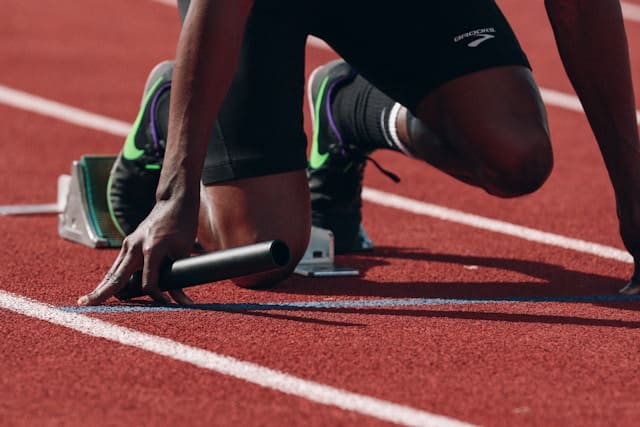As an athlete, you’re no stranger to muscle pain and tension. It’s part and parcel of pushing your body to the limit and striving for peak performance. But, there’s a secret weapon that can help you enhance your performance, reduce pain, aid recovery, and even increase your strength: the humble foam roller. This simple tool, when used correctly, can unleash a world of benefits through a technique called myofascial release. In this comprehensive guide, we’ll explore the what, why, and how of foam rolling for myofascial release.
The Science of Foam Rolling
Before we delve into the how-to, let’s first understand the science behind foam rolling. The term “myofascial” refers to the combination of muscles and fascia. Fascia is a layer of connective tissue that covers and binds together muscles and organs in our body. Stress, injury, or overuse of muscles can cause this tissue to become tight or inflamed, resulting in pain and reduced mobility.
Also read : What Are the Benefits of Mindful Walking in Reducing Work-Related Stress?
Enter foam rolling – a form of self-myofascial release (SMR) that uses pressure and massage-like movements to stretch and release the tension in these tissues. Numerous studies indexed on PubMed have supported the efficacy of foam rolling. One such study found that foam rolling can increase range of motion in the joints without reducing muscle performance. Another demonstrated that it aids in reducing muscle soreness post-exercise, thereby aiding in recovery.
Incorporating Foam Rolling into Your Warm-Up
Warming up before any workout or performance is crucial. Incorporating foam rolling into your warm-up routine can help prepare your body for exercise by increasing blood flow and flexibility and reducing the risk of injury. Start by selecting a medium-density foam roller. These are more versatile than their high-density counterparts and are perfect for beginners.
This might interest you : How Can Textile Design in Hospital Attire Reduce Patient Stress and Improve Comfort?
Begin with large, sweeping rolls on the major muscle groups of your body – your calves, quads, glutes, and back. Apply moderate pressure and roll slowly, about one inch per second. If you encounter a particularly painful or tight spot, known as a trigger point, pause and hold the roller on this spot for about thirty seconds to help release the tension.
Foam Rolling for Performance Enhancement
Optimizing body performance is a key objective for any athlete. Foam rolling can be instrumental in this regard. The pressure from the roller helps break up fascial adhesions and scar tissue that can limit mobility and performance. Moreover, by increasing blood circulation, foam rolling helps deliver more oxygen and nutrients to your muscles, supporting better function and strength.
It is beneficial to focus on specific muscle groups related to your sport or activity. For example, a runner might focus on their calves and hamstrings, while a weightlifter may concentrate on their back and shoulders. Be sure to maintain slow, intentional rolls, spending extra time on areas that feel particularly tight or sore.
Foam Rolling for Recovery
Just as foam rolling can enhance your warm-up, it’s also a vital tool for post-exercise recovery. Foam rolling after a workout can help alleviate the buildup of lactic acid that often leads to muscle soreness. Additionally, it aids in the reduction of inflammation in the tissues, facilitating faster healing.
To use foam rolling for recovery, use the same technique as you would for warming up. However, you may want to spend extra time on the muscles that were particularly engaged in your workout. Also, remember to keep your body relaxed and your breathing steady. This can help reduce any discomfort and enhance the effectiveness of the release.
Foam Rolling for Pain Management
Chronic muscle pain can often be a result of trigger points or ‘knots’ in the fascia. Regular foam rolling can help to alleviate this pain by releasing these knots and improving circulation to the area. It can be a cost-effective and convenient alternative to professional massage therapy.
When rolling for pain management, it’s important to listen to your body and not to apply too much pressure. The aim is not to cause more pain, but rather to gradually relieve it. If a certain area is too sensitive to roll, work on the surrounding muscle tissue first and slowly work your way into the more tender areas.
The technique of foam rolling for myofascial release is not just a trend, but a science-backed practice that can bring about real benefits for athletes. As you incorporate this practice into your regular exercise routine, remember to be patient and consistent. Over time, you’ll notice an improvement in your performance, strength, and overall muscle health.
Choosing the Right Foam Roller
Selecting the right foam roller is crucial to reap the most benefits from your foam rolling sessions. Foam rollers come in different sizes, shapes, and densities, each serving a unique purpose and targeting specific areas of the body. To start, a medium-density foam roller, as previously mentioned, is an excellent choice for most people. They offer a balance between comfort and pressure, making them suitable for a wide range of uses.
Long rollers (36 inches), are ideal for covering larger areas like the back, while shorter rollers (12 to 18 inches) are perfect for targeting smaller areas like the calves and arms. Half-round foam rollers, flat on one side and rounded on the other, can be used for balance exercises and less intense massage.
Choose rollers with bumps or ridges for a deeper, more intense massage. These types of rollers are excellent for breaking up scar tissue and fascial adhesions. It’s important to remember that these may feel more intense, so beginners may want to start with a smooth roller and gradually move to a textured one as they get more comfortable with foam rolling.
High-density foam rollers are firmer and are excellent for athletes who prefer a more intense massage. They’re also more durable and keep their shape longer than lower-density rollers. However, first-time users may find high-density rollers too painful.
Conclusion: A Must-Have Tool for Athletes
In conclusion, foam rolling for myofascial release is a game-changer for athletes. It’s a versatile tool that not only aids in warming up, improving athletic performance, and recovery but also in managing muscle pain. By incorporating this practice into your routine, you’ll likely notice improvements in your range of motion, flexibility, muscle performance, and overall athletic performance.
The key to effective foam rolling is consistency and patience. Start slow, listen to your body, and gradually increase the intensity as your body adapts. Whether you’re a seasoned athlete or a fitness enthusiast, foam rolling is a cost-effective and convenient alternative to professional massage therapy that you can do right at your home.
As it grows in popularity, remember that foam rolling is more than just a trend. It’s a science-backed practice supported by numerous studies indexed on PubMed and Google Scholar. And while it may seem challenging at first, with patience and practice, it becomes an easy and enjoyable part of your fitness routine.
Don’t forget to choose the right foam roller that suits your needs and preferences. Whether you prefer smoother, medium-density rollers or firmer, high-density rollers, the important thing is that you find the one that’s comfortable for you.
In the quest for peak athletic performance, don’t underestimate the power of the humble foam roller. Give it a roll and experience the difference it can make in your athletic journey.






